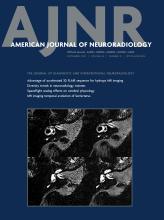This article requires a subscription to view the full text. If you have a subscription you may use the login form below to view the article. Access to this article can also be purchased.
Abstract
BACKGROUND AND PURPOSE: Intra-arterial thrombolytics may be used to treat distal vessel occlusions, which cause incomplete reperfusion following mechanical thrombectomy. Because immediate reperfusion after intra-arterial thrombolytics occurs rarely, the aim of this study was to assess the delayed effect of intra-arterial thrombolytics using follow-up perfusion imaging.
MATERIALS AND METHODS: We included patients from a prospective stroke registry (February 2015 to September 2022) who had undergone mechanical thrombectomy and had incomplete reperfusion (expanded TICI 2a–2c) and available 24 hour perfusion imaging. Perfusion imaging was rated as delayed reperfusion if time-sensitive perfusion maps did not show wedge-shaped delays suggestive of persisting occlusions corresponding to the post-mechanical thrombectomy angiographic deficit. Patients treated with intra-arterial thrombolytics were compared with controls using multivariable logistic regression and inverse probability of treatment weighting matching for baseline differences and factors associated with delayed reperfusion.
RESULTS: The median age of the final study population (n = 459) was 74 years (interquartile range, 63–81 years), and delayed reperfusion occurred in 61% of cases. Patients treated with additional intra-arterial thrombolytics (n = 40) were younger and had worse expanded TICI scores. After matching was performed, intra-arterial thrombolytics was associated with higher rates of delayed reperfusion (adjusted OR = 2.7; 95% CI, 1.1–6.4) and lower rates of new infarction in the residually hypoperfused territory after mechanical thrombectomy (adjusted OR = 0.3; 95% CI, 0.1–0.7). No difference was found in the rates of functional independence (90-day mRS, 0–2; adjusted OR = 1.4; 95% CI, 0.4–4.1).
CONCLUSIONS: Rescue intra-arterial thrombolytics is associated with delayed reperfusion of remaining vessel occlusions following incomplete mechanical thrombectomy. The value of intra-arterial thrombolytics as a potential therapy for incomplete reperfusions after mechanical thrombectomy should be assessed in the setting of randomized controlled trials.
ABBREVIATIONS:
- aOR
- adjusted OR
- DR
- delayed reperfusion
- eTICI
- expanded TICI
- IA
- intra-arterial
- IAT
- intra-arterial thrombolytics
- IPTW
- inverse probability of treatment weighting
- IQR
- interequartile range
- MT
- mechanical thrombectomy
- sICH
- symptomatic intracranial hemorrhage
- © 2023 by American Journal of Neuroradiology











